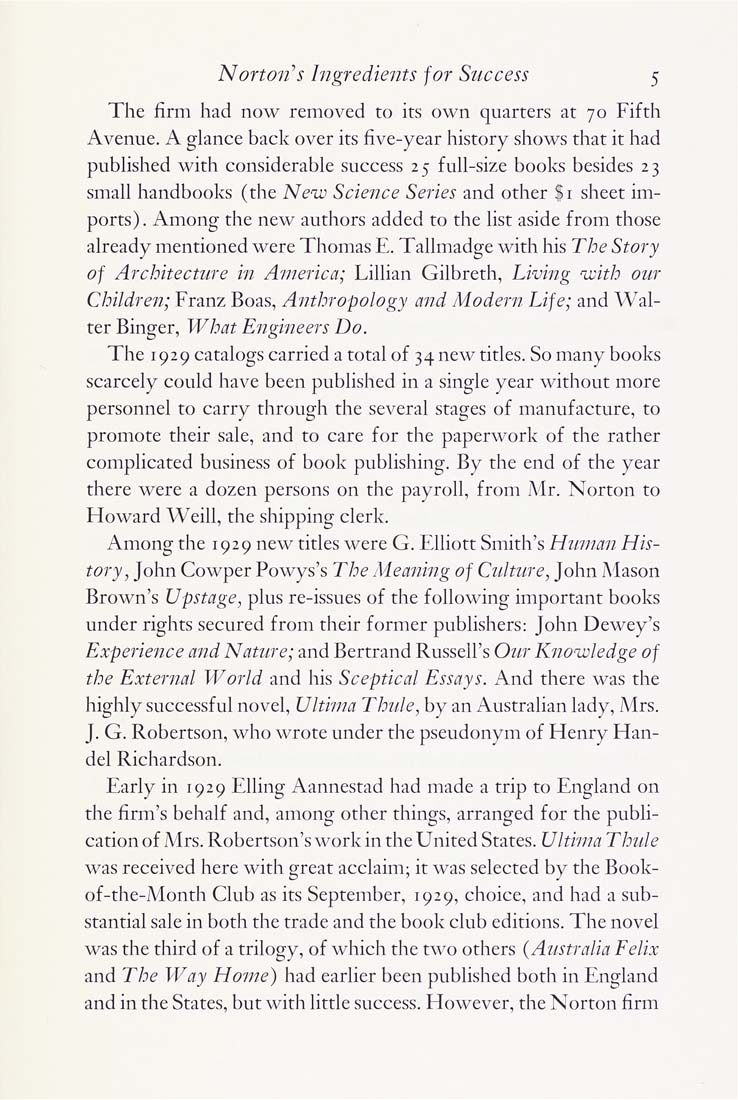Columbia Library columns (v.18(1968Nov-1969May))
(New York : Friends of the Columbia Libraries. )
|
||
|
|
|
|
| v.18,no.2(1969:Feb): Page 5 |

Norton's Ingredients for Success 5 The firm had now removed to its own quarters at 70 Fifth Avenue. A glance back over its five-year history shows that it had published with considerable success 2 5 full-size books besides 2 3 small handbooks (the New Science Series and other |i sheet im¬ ports). Among the new authors added to the list aside from those already mentioned were Thomas E. Tallmadge with his The Story of Architecture in America; Lillian Gilbreth, Living with our Children; Franz Boas, Anthropology and Modern Life; and Wal¬ ter Binger, What Engineers Do. The 1929 catalogs carried a total of 34 new titles. So many books scarcely could have been published in a single year without more personnel to carry through the several stages of manufacture, to promote their sale, and to care for the paperwork of the rather complicated business of book publishing. By the end of the year there were a dozen persons on the payroll, from A'lr, Norton to Howard Weill, the shipping clerk. Among the 1929 new titles were G. Elliott Smith's Human His¬ tory, John Cowper Powys's The Meaning of Cidture, John Mason Brown's Upstage, plus re-issues of the following important books under rights secured from their former publishers: John Dewey's Experience and Nature; and Bertrand Russell's Our Knowledge of the External World and his Sceptical Essays. And there was the highly successful novel. Ultima Thule, by an Australian lady, Mrs. J. G. Robertson, who wrote under the pseudonym of Henry Han¬ del Richardson. Early in 1929 Elling Aannestad had made a trip to England on the firm's behalf and, among other things, arranged for the publi¬ cation of Mrs. Robertson's work in the United States. Ultima Thule was received here with great acclaim; it was selected by the Book- of-the-Month Club as its September, 1929, choice, and had a sub¬ stantial sale in both the trade and the book club editions. The novel was the third of a trilogy, of wliich the two others (Australia Felix and The Way Home) had earlier been published both in England and in the States, but with little success. However, the Norton firm |
| v.18,no.2(1969:Feb): Page 5 |







